#megalithic chamber tombs
Explore tagged Tumblr posts
Text

The Buildings of England
CORNWALL
Second Edition, 1970.
163 notes
·
View notes
Text
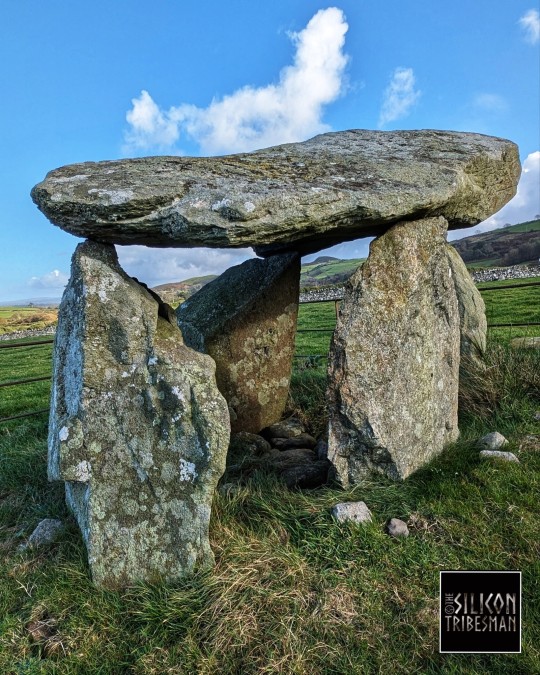
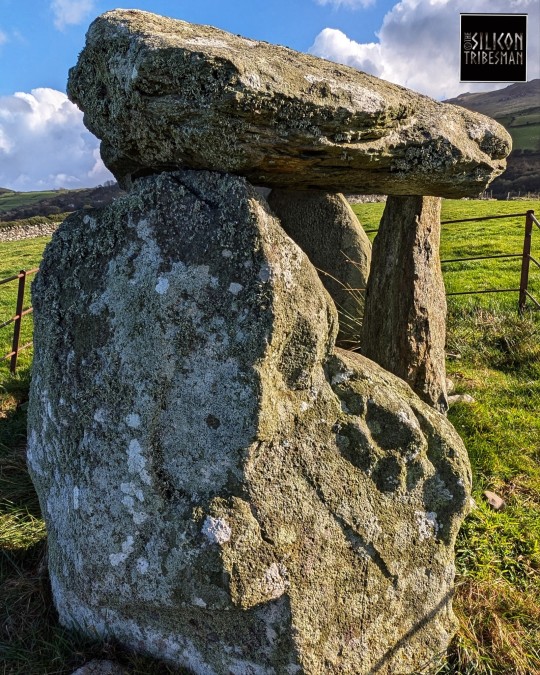
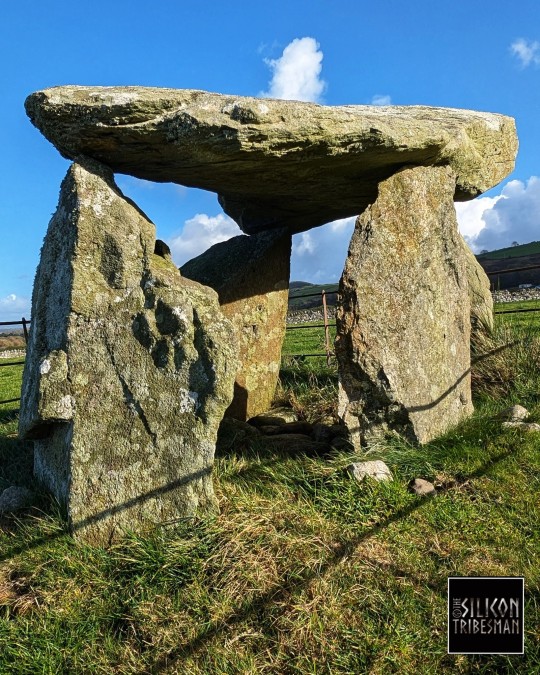

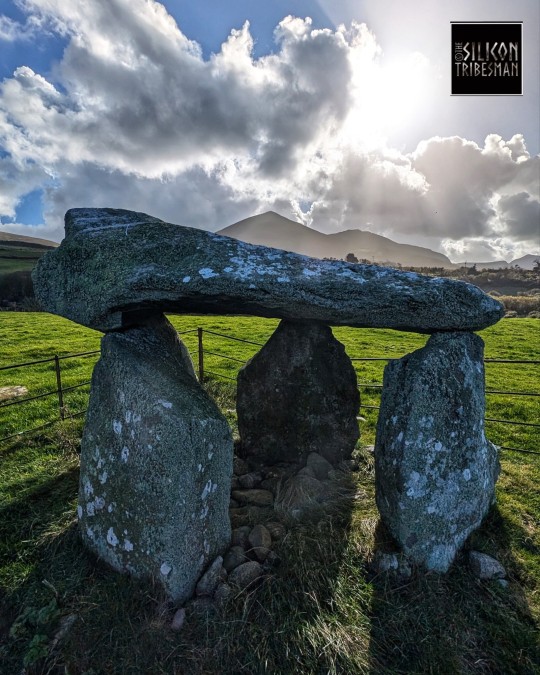
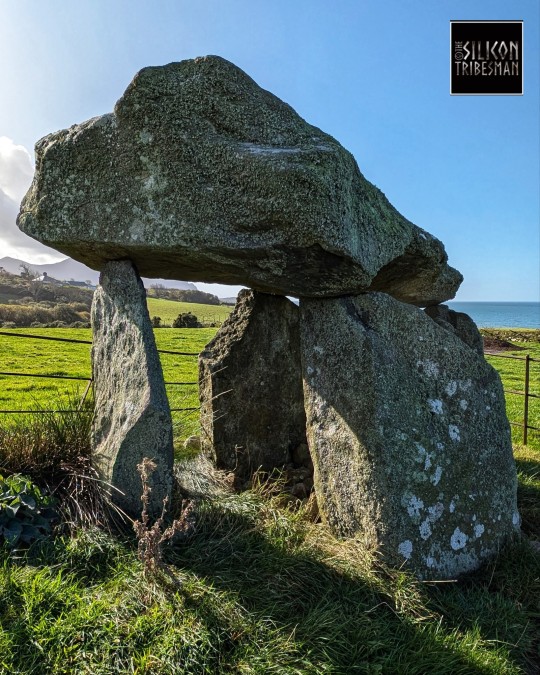
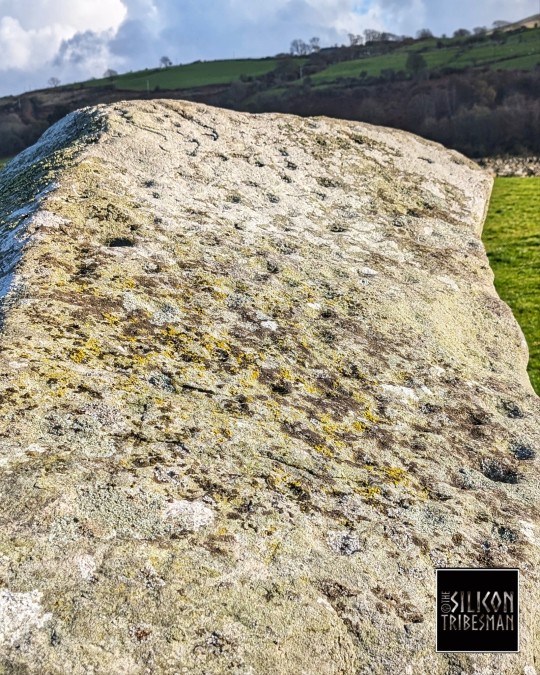
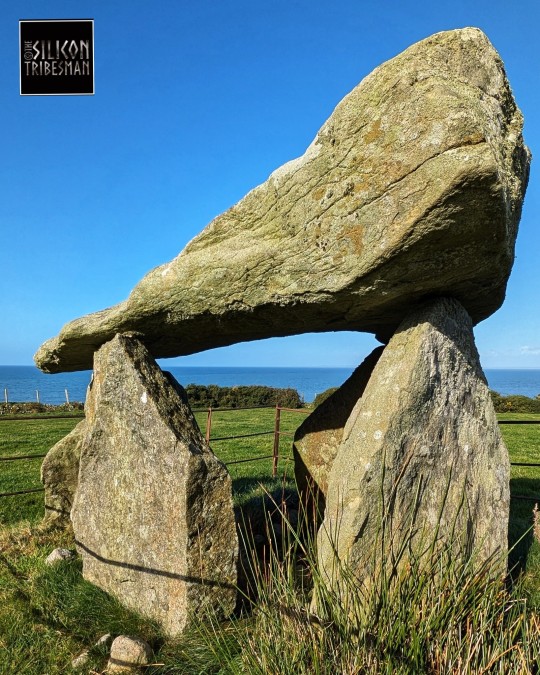
Bachwen Neolithic Burial Chamber, Clynnog Fawr, Wales
#ice age#stone age#bronze age#iron age#prehistoric#prehistory#neolithic#mesolithic#paleolithic#archaeology#cromlech#dolmen#cairn#ritual#megalithic#megalith#chambered tomb#ancient sites#ancient living#ancient cultures#ancient crafts#Wales#landscape#capstone#cup marks#rock art
107 notes
·
View notes
Text

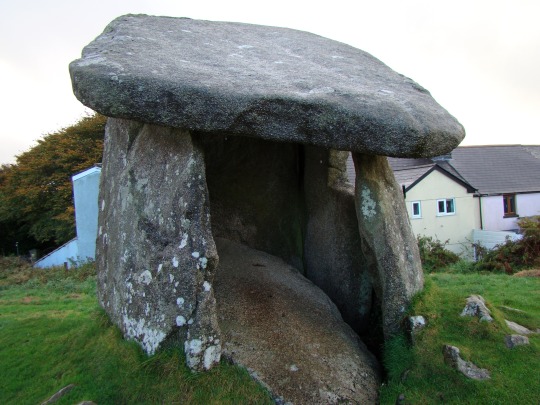
Trethevy Quoit, a megalithic tomb known locally as the "giant's house." It used to be buried by a mound, with the rock shelter protecting the grave. Over time, the mound eroded, leaving the stones exposed.
Cornwall, England. 2012
#megalithic#Trethevy Quoit#cornwall#england#uk#united kingdom#neolithic#ancient cultures#cemetery#tomb#original photography#burial chamber#lensblr#taphophilia#taphophile#photography#photographers on tumblr#tombs#archaeology#wanderingjana
9 notes
·
View notes
Photo

Klekkende Høj passage grave on the island of Møn in Denmark. View from the inside of the south tomb along the entrance passage

view looking north from southern end of tomb
#megaliths#archaeology#neolithic#funnelbeaker culture#prehistory#megalithic tomb#denmark#burial#burial chamber#funerary rites#passage grave#my upl
65 notes
·
View notes
Text

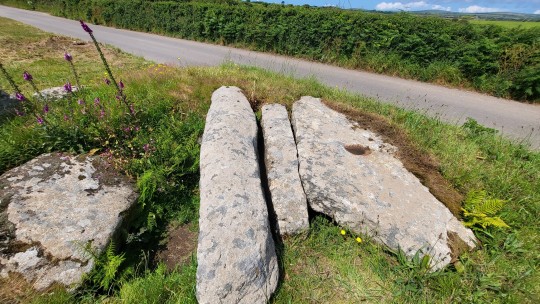
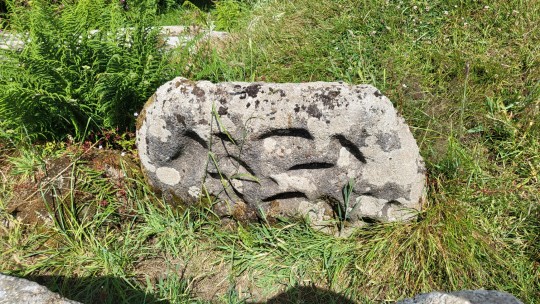
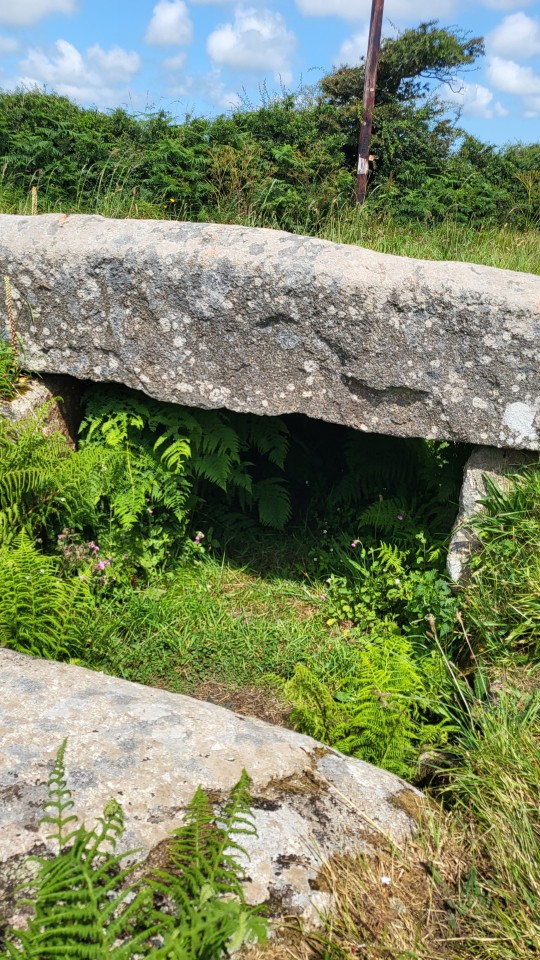
21st June 2023
Tregiffian Barrow (Hirvedh Treguhyon in Kernewek), also called Cruk Tregyffian, is a stunning Scillonian chamber tomb located a stones throw from the Merry Maiden���s circle, just past Nansmornow. It’s been cut in half by the road right beside it, but 4.3 meter long & 1.2 meter wide chamber survived, while half the kerbstones did not. There are three massive capstones still in place while their fourth fellow has fallen. The most visually exciting part of the tomb is now kept safe in Cornwall Museum over in Truru – a cupmarked stone. There’s a cast in situ at the tomb as part of the entry so the impression is not lost.
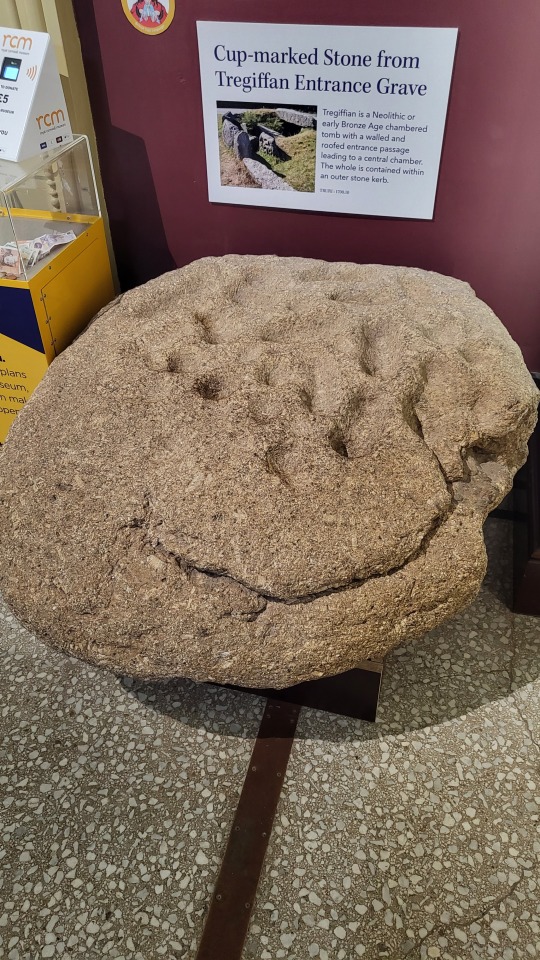
Archaeological study has found both bone fragments from cremation & urns along side flints, as well as the potential for the tomb to have been used at least twice by a community – if not more. The contents have been dated to 1900 BC and there are some light theories that it formed a ritual or religious complex along with the surrounding stones.
megalithic.co.uk
#Tregiffian Barrow#Cruk Tregyffian#chambered tomb#barrow#burial site#neolithic burial site#neolithic#bronze age#neolithic tomb#burial tomb#cupmarked stone#kernow#cornwall#megalithic site#neolithic site#Hirvedh Treguhyon#scillonian chamber tomb#entrance grave
3 notes
·
View notes
Text
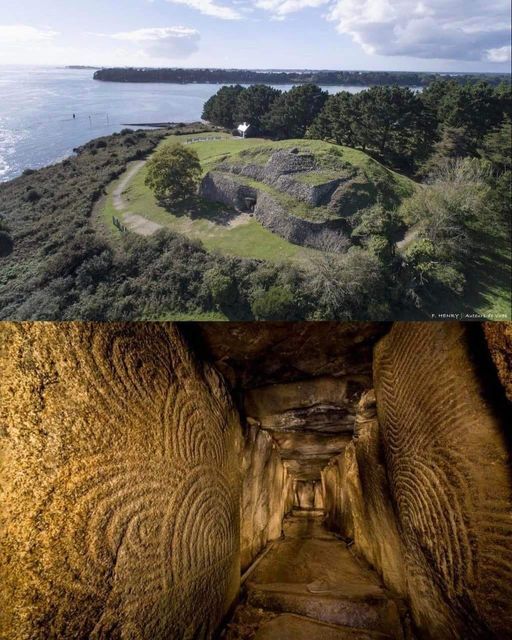
Gavrinis is a small island in the Gulf of Morbihan in Brittany, France. It contains the Gavrinis tomb, a Neolithic passage tomb built around 4200–4000 BC, making it one of the world's oldest surviving buildings. Stones inside the passage and chamber are covered in megalithic art. It is likened to other Neolithic passage tombs such as Barnenez in Brittany and Newgrange in Ireland.
#ancestors alive!#what is remembered lives#memory & spirit of place#ancient ways#sacred ways#Gavrinis#Gulf of Morbihan#Brittany#France#Gavrinis tomb#Neolithic passage tomb#4200-400 BC#megalithic art#Barnenez#Newgrange#Ireland#Sacred Ways
646 notes
·
View notes
Photo

Poulnabrone
Poulnabrone is a portal tomb in the region known as the Burren, County Clare, Ireland and the oldest dated megalithic monument in the land. The name means "Hole of the Quern Stones", but the site is also commonly referred to as "Hole of the Sorrows". Dated to c. 4200 BCE it stands 5.9 feet high (1.8 meters) and 12 feet (3.6 meters) long in a field surrounded by the karst stone formations which make up the Burren. It is defined as a dolmen: a single-chamber, megalithic tomb distinguished by a capstone resting on upright stones.
It is the best known and most often photographed of the almost 200 dolmens in Ireland because of its near perfect symmetry. Excavations at the site in the 1980's CE uncovered human remains and grave goods, establishing the site as an ancient tomb, but it may have served other purposes as well. Dr. Carleton Jones, who worked at the site, suggests it may have been an "ancient billboard" as well as a tomb marking the territory of the tribe of the Burren.
Construction of the Megalith
The stones used in construction were raised from the local area, although theories have persisted that they were brought from further afield, and were then assembled with perfect balance and precision using no concrete and no compounds whatsoever. The massive capstone of Poulnabrone rests on five upright stones: two portal stones, two orthostats (upright stones), and an end stone. Archaeologists who have worked at the site since the first excavations in 1986 have concluded that Poulnabrone was erected as a doorway between this world and the next based upon artifacts uncovered there and the slant of the capstone.
The burial chamber measures 9 inches (25 cm) deep, though archaeologists believe it was once deeper — 21.6 inches (55 cm). In 1985 CE the capstone cracked and the dolmen collapsed; this provided archaeologists with the opportunity to excavate the site thoroughly without worrying about disturbing the dolmen's delicate position. When the work was concluded, the capstone was repaired and Poulnabrone reassembled precisely as it had been before.
Continue reading...
43 notes
·
View notes
Text


The 'Spiral'
One of the most common geometric motifs is the spiral, painted and carved throughout the world. And yet the symbolic meaning of the spiral in prehistoric art is speculative. Some argue it may have represented the sun, or the portal to a spirit world. Perhaps it represented life itself, or life beyond life - eternity. Or else, it may have had a more prosaic, functional purpose, that of a calendrical device, employed to deconstruct time into chapters, seasons and solstices.
From the painted and engraved walls of the Upper Palaeolithic to the decorated megalithic standing stones of the Neolithic, the symbols persisted. In Europe, the megalithic art of Ireland featured the spiral intensively.
At Brú na Bóinne, a significant center of human activity for almost 6,000 years, the spiral symbol is a dominant feature. The site is a complex of Neolithic mounds, chamber tombs, standing stones, henges and other prehistoric enclosures. The major sites within Brú na Bóinne are the impressive passage graves of Newgrange, Knowth and Dowth, each standing on a ridge within the river bend. Each of the three main megalith sites have significant archaeoastronomical significance. It is thought that Newgrange and Dowth have winter solstice solar alignments, and Knowth has an equinox solar alignment.
109 notes
·
View notes
Text
Megalithic Sites
A megalith is a huge stone that has been put to some type of purpose, typically between the Mesolithic through the chalcolithic period, fading out through the Bronze age. They can be single or multiple stones, though they are generally not tombs.
Single stones can come in three general types: Menhir, also know as 'standing stones', monolith (a single stone on its own), and capstones, which cover burial chambers without other supports. Multiple stones can come in five general types: Alignments which can be rows or spirals, megalithic or Cyclopean walls, which are rough-hewn bolder walls, stone circles or cromlechs like Stonehenge, dolmen which can be called a portal tomb and are table like entrances into tombs, and cist which is a stone coffin.

By German Archaeological Institute, photo E. Kücük. - Dietrich L, Meister J, Dietrich O, Notroff J, Kiep J, Heeb J, et al. (2019) Cereal processing at Early Neolithic Göbekli Tepe, southeastern Turkey. PLoS ONE 14(5): e0215214. https://doi.org/10.1371/journal.pone.0215214Image: https://journals.plos.org/plosone/article/figure?id=10.1371/journal.pone.0215214.g001"Copyright: © 2019 Dietrich et al. This is an open access article distributed under the terms of the Creative Commons Attribution License, which permits unrestricted use, distribution, and reproduction in any medium, provided the original author and source are credited." (links to CC BY 4.0 the day the picture is uploaded), CC BY 4.0, https://commons.wikimedia.org/w/index.php?curid=90543136
Humans began building large stone structures even before we began living in cities. Some of the earliest are around the area of Gobleki Tepe in modern day Turkey, which were built around 9000 BCE by a culture that we don't know what they call themselves and first rediscovered in 1963. It wasn't until about 1994 that the excavations began. These sites consist of many large stones that are decorated with male figures and animals. Because these sites predate writing, we don't know what the purpose was, but we can tell by what refuse is around that these sites were not for full-time shelter. Because of this, we believe that they held ceremonial significance. However, with less than 5% of the site excavated, we still have a lot to learn about this site, though we have learned so much already.

By Mahmut Bozarslan (VOA) - https://d33vxfhewnqf4z.cloudfront.net/a/tarihin-yeni-sifir-noktasi-karahantepe/7351113.html, Public Domain, https://commons.wikimedia.org/w/index.php?curid=145335567
Nearby, there is a site called Karahan Tepe that was discovered more recently that might be older, possibly dating as far back as 11000 BCE. It also includes area where the stone for the megaliths was quarried. It was first rediscovered in 1997. It hasn't been as excavated or studied as much as Gobekli Tepe, however it appears to have been intermittent in habitation, possibly following herds of grazing animals and availability of wild growing grasses such as barley and wheat.

By Hanay, CC BY-SA 3.0, https://commons.wikimedia.org/w/index.php?curid=15044109
Atlit Yam is a site one kilometer off-shore from modern day Atlit. At the time it was built, approximately 6900 BCE, during the last Ice Age, the location was on the shore. There is a large stone semicircle that would have been around a freshwater spring. This site also has what appear to be houses as well. Around 6300 BCE, Mount Etna appears to have a collapse of its eastern flank that likely led to 40m tsunami in the Mediterranean. There were piles of fish and other evidence of rapid evacuation of the site. Within the site, there is also a woman and child that appear to have had tuberculosis, the earliest known cases, as well as men who have inner ear damage that indicate that they probably dived to fish and that the water was likely cold. There is evidence that this was one of the earliest sedentary cultures with grain storage and what appear to be wells, before it was abandoned to the tsunami and sea-level rise of the end of the last Ice Age.
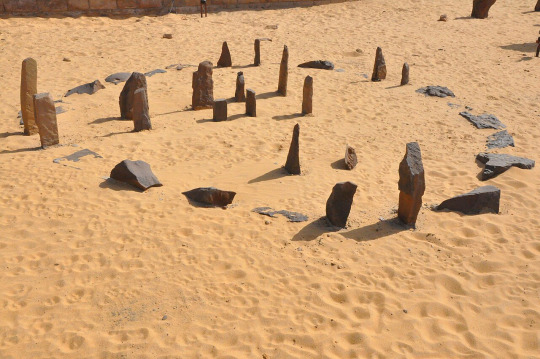
By Raymbetz - Own work, CC BY-SA 3.0, https://commons.wikimedia.org/w/index.php?curid=7525976
Another pre-agriculture seasonal megalithic habitation is Nabta Playa in modern day Egypt. While the location is now within the Sahara Desert, at the time, it was a rich savanna with a lake nearby. Archaeological findings suggest that people began camping there seasonally around 10000-9000 BCE. The megalithic structure was probably built around 7500 BCE, The megalithic site seems to be a "calendar circle", though there is some debate about that. Given that the exact alignment of the stars and seasons has shifted over the past 12000 years, it's difficult to know for sure which constellation the stones align to and which season, but they do seem to align with the bright stars in the constellation Orion. There are suggestions that the site was used as a ceremonial gathering site prior to the building of the stone circle based on the remains of cattle found in the location. It's believed, based on modern nomadic cultures, that cattle would have only been killed on important occasions.
Resources:
Milo Rossi (miniminuteman on YouTube and tiktok): Series on Archaeology of Southern Turkey Series regarding Netflix's Ancient Apocalypse
#megalith#megalithic sites#gobleki tepe#karahan tepe#nabata playa#atlits yam#prehistory civilizations#neolithic civilizations
3 notes
·
View notes
Text
Vannes to Carnac
We have really enjoyed our time in Vannes. This morning we went for a walk starting on a path that runs beside the campground that we hadn’t yet been on. It was a lovely walk and a lovely morning weather wise.
Back to Tessi for breakfast and then it was time to get ourselves packed up to depart. Today was another short drive, about 40 minutes. First we stopped off at Decathlon (which it turned out was having a sale so was packed) to get a couple of things, which inevitably turned into 6 🙄.
Today we drove to Carnac which is known for its prehistoric monuments. With more than 3,000 monumental stones, it’s the largest collection in the world. We arrived around lunchtime and after a bit of to and froing found a parking spot.
Jose had booked us in for an English tour so we had a quick lunch in town and then walked to the Megaliths museum. It was absolutely fascinating. The monuments have been carbon dated to having been erected between 5000 - 3000 BC and are therefore Neolithic, so our ancestors erected them. No one understands the meaning of the constructions but it was interesting to hear the various theories.
Where we are parked is next to St Michel’s Tumulus. Which is a burial tomb covered by a mound of soil. Unlike the other combined tombs, this huge construction (circa 4700 BC) was for one individual. Within the chambers they found artefacts that must have come from Turkey (800km away) and Andalucía (1000km away). Aside from the alarming fact of the distance these things had travelled was the similarity to the whole pharaohs, pyramids thing.
After the tour we were somewhat weary so headed into town for a, dare I say it, well deserved drink. We then headed back to Tessi. Tonight we are staying in a car park with about 6 other motorhomes. Not at all unpleasant, we have some grass and a cool breeze.
A relaxing evening before more prehistoric investigations tomorrow.
2 notes
·
View notes
Photo
A dolmen (/ˈdɒlmɛn/) or portal tomb is a type of single-chamber megalithic tomb, usually consisting of two or more upright megaliths supporting a large flat horizontal capstone or "table". Most date from the Late Neolithic period (4000–3000 BCE) and were sometimes covered with earth or smaller stones to form a tumulus (burial mound). Small pad-stones may be wedged between the cap and supporting stones to achieve a level appearance.[1] In many instances, the covering has eroded away, leaving only the stone "skeleton".




Dolmen of the Pierre Levée, La Chapelle-Vendômoise
This limestone dolmen is located just south of La Chapelle-Vendômoise in the Loir-et-Cher department in central France. It is a classic Angevin dolmen, which face east and have a lowered anteroom (portico) leading to a larger room. It is thought to date as far back as the Neolithic period and is still in nearly complete condition.
#history#prehistory#architecture#tombs#burials#neolithic#late neolithic#france#centre-val de loire#la chapelle-vendômoise#dolmen de la pierre levée#dolmen#tumulus
877 notes
·
View notes
Text
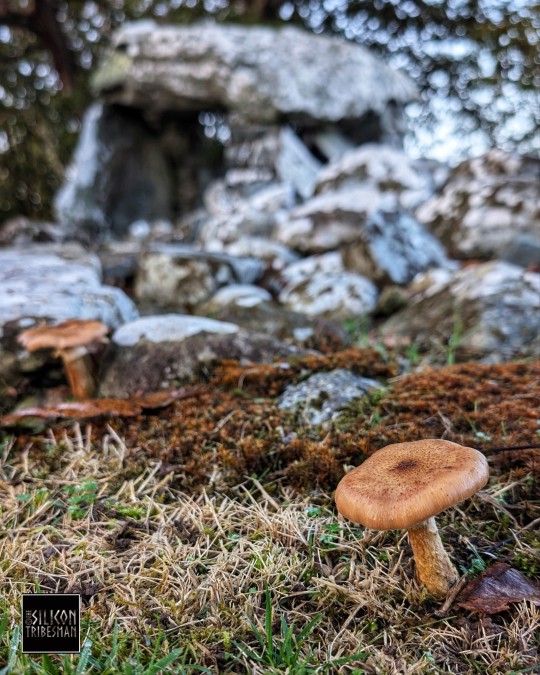




Dyffryn Ardudwy Neolithic Chambered Tombs, Dyffryn Ardudwy, Wales
#ice age#stone age#bronze age#iron age#prehistoric#prehistory#neolithic#mesolithic#paleolithic#archaeology#chambered tomb#burial chamber#burial mound#burial ground#dolmen#cromlech#ancient sites#Wales#megaliths#megalithic
80 notes
·
View notes
Text
The History Of Tomb Stones
Tombstones have a long and rich history dating back thousands of years: The earliest grave markers appeared around 3000-6000 years ago during the Neolithic and Bronze Ages. These were typically large megalithic monuments marking burial chambers rather than individual graves[1][3]. Before the existence of formal cemeteries, early humans would bury their dead in plots near their dwellings, often…
0 notes
Text

my thesis advisor gave me this book recently, for me to keep forever. it seems like for my thesis i'm going to write about artefacts of the globular amphora culture
this book was published in 1967, so it's ummm how to say it's nicely. a classic publication. nobody read it before, so i will have to cut all the pages. it's a perfect opportunity to test my paper knife i got recently, it;s made of antler and i'm slightly obsessed with it. this book spent almost 60 years on bookshelves in different museums and univeristies until it found me.
i think i will love the globular amphora culture. they had very nice richl;y decorated pottery. i've got to make a replica of their pots one day

they were nomadic pastoralists :3 which is a nice coincidence, bc nomadic pastoralism is one my my favourite subjects. herding mostly pigs and cattle. almost complete lack of spindle whorls suggest that they didn't have textile production. they practiced human sacrifice, especially of children. and also there is a lot of evidence for their cannibalism (the cool kind of cannibalism). another cool thing is that they were building megalithic tombs, with burial chambers made of giants stone slabs, which is an impressive thing in poland lol. there are many burials of ppl without heads or alternatively, burials of decapitated skulls. cattle had a very important role in their society so there are also fascinating cattle burials, with up to 10 cows buried together, with grave goods and sometimes also accompanied by human sacrifice. overall everything about them is rather creepy and exciting. i can't wait to to see my arrtefacts >_<
2 notes
·
View notes
Text


19th Feb 2023
Bosiliack Barrow - a stunning example of a scillonian enterance grave, a type of grave found on the Isles of Scilly & West Cornwall. It's one of a handful of barrows in Cornwall to be excavated semi-recently and there's a photo on it's megalithic.co.uk listing. It's enterance is lined up to face the sun during the midwinter solstice, and inside it's grave there were potential offerings of topsoil & turf.
megalithic.co.uk
#bosiliack barrow#cornwall#kernow#megalith#neolithic#barrow#Chambered Tomb#Scillonian entrance grave#bronze age
7 notes
·
View notes
Text

Views outside and inside Gavrinis, a small island In The Gulf Of Morbihan In Brittany, France.
It contains the Gavrinis Tomb, A Neolithic Passage Tomb built around 4200–4000 BCE, making it one of the world's oldest surviving buildings
Stones inside the passage and chamber are covered in megalithic art. It is likened to other Neolithic passage tombs such as Barnenez in Brittany and Newgrange in Ireland.
38 notes
·
View notes